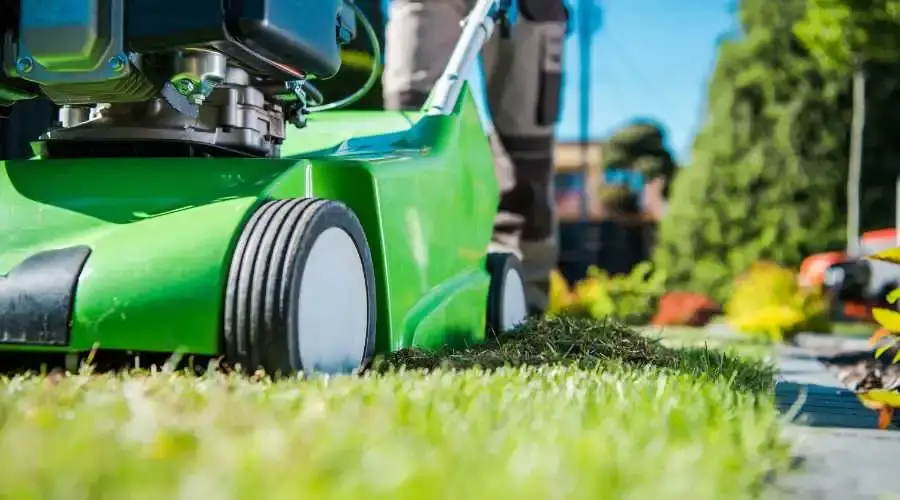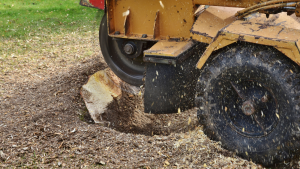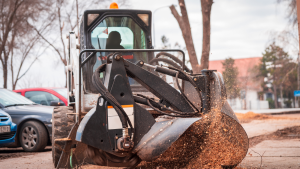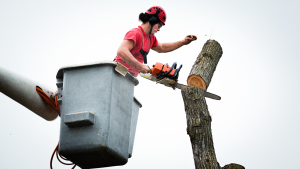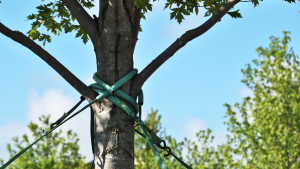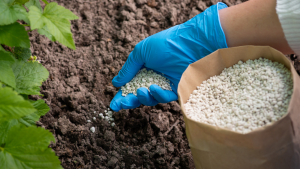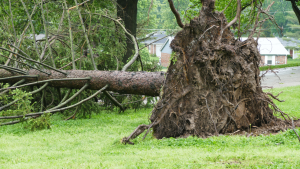What exactly is dethatching? How can dethatch benefit your lawn? Dethatching is the removal of excessive thatch. You can maintain your lawn looking healthy and lovely by doing so!
Thatch is a mat-like covering of organic material between grass blades, permanent roots, and the soil layer underneath. A little thatch isn’t harmful to your grass. In reality, it has certain advantages, such as delivering nutrients, retaining soil moisture, and keeping burrowing pests out. Excessive thatch is a bad thing. It may cause your grass to brown and the earth to become spongy to the touch, among other things.
Fortunately, you can remove thatch from your lawn by raking it thoroughly using dethatching equipment. What exactly is dethatching equipment? Continue reading to find out more about property dethatching strategies and advantages!
What Are the Benefits of Dethatching a Lawn?
Dethatching your grass is a wise decision since it provides the following advantages:
- Increases grass roots’ access to critical nutrients, water, and air.
- Improves the soil’s health.
- Enhances nutritional density.
- Allows lower grass shoots to get more sunshine.
- Encourages and promotes root development.
- It can aid in water conservation.
- Weed infestations are controlled.
- enhances your lawn’s health and attractiveness.
- Reduces the susceptibility of your grass to fungi, illness, and pests.
- Aids in the improvement of fertilizer effectiveness.
- It can aid with the winterization of your grass.
Does My Lawn Need Dethatching?
There are a few signs to look for that suggest that you remove thatch from your grass. The following are indicators that your grass needs dethatching:
- The grass blades are frail.
- Walking on the grass feels mushy and bouncy.
- Mowing the lawn is difficult.
- The grass is diminishing.
- The grass has several dry areas.
- Your formerly lush and gorgeous grass is becoming brown.
- Insects have taken up residence in your grass.
- Your lawn has become a breeding ground for fungal infections.
You may also use thatch thickness to evaluate whether it must be removed. The simplest method is to take a 3-inch grass sample using a spade. The dark, spongy layer between the grass blades and the soil surface should be measured. Dethatching should be considered if the coating is more than half an inch thick.
Poking your finger into the dirt is another approach to determine the need for thatch removal. If it’s too hard, you can have a thatch issue.
If you need clarification on whether your grass needs dethatching, The Joliet Tree Service Pros would gladly perform an on-site examination.
When to Dethatch Your Lawn
During the growth season, it is ideal for dethatching your grass. Of course, the optimal time of year to dethatch your grass varies on where you reside in the United States. Remove thatch from your lawn in early spring or later summer to early autumn for cool-season grasses (northern areas of the United States). Warm-season grasses (southern regions of the United States) should be dethawed in late spring to early summer. Never begin dethatching while your grass is stressed or dormant, and avoid dethatching during a drought or the height of summer. This might cause serious harm to your landscape.
One of the most crucial lawn dethatching techniques is to take your time. If your grass is fresh, you should wait many years before dethatching it. Dethatching may be difficult on a new lawn, and using power equipment can cause substantial damage that may need the replacement of part or all of your grass.
How to Dethatch Your Lawn
It is best to dethatch your grass throughout the growing season. Of course, depending on where you live in the United States, the best time of year to dethatch your grass differs. Remove thatch from your lawn in early spring or later summer to early October for cool-season grasses (northern US). Warm-season grasses (those found in the southern United States) should be dethawed in late spring to early summer. Dethatching should never begin when your grass is stressed or dormant, and it should be avoided during a drought or the height of summer. This might seriously ruin your landscape.
Taking your time is one of the most crucial lawn dethatching procedures. If your grass is young, you should wait long before dethatching it. Dethatching a new lawn may be challenging, and utilizing power equipment can cause significant damage that may need the replacement of some or all of your grass.
What Causes Excess Thatch?
Excessive thatch may soon build. Excess thatch is caused by several circumstances, including the following:
- Overwatering
- Using an excessive amount of nitrogen fertilizer
- The subsoil underlying the sod is of poor grade.
- Soil deficient in nutrients
- Soil that is acidic
- Earthworms are few (pesticide treatments may keep them at bay).
How to Prevent a Thatch Problem
Fortunately, with correct lawn care procedures, you can keep thatch under control. To prevent a thatch issue, do the following:
- Avoid overfertilizing, mainly if using a nitrogen-rich fertilizer.
- Every three to five years do a soil test. Contact your local lawn care specialists for additional information.
- Mow your grass regularly.
- Pesticides and fungicides that may harm earthworms should be avoided.
- Avoid overwatering your yard! Once a week, water it to a depth of 1 to 1.5 inches.
When to Call a Professional
It’s easy to perform your lawn dethatching. However, it is a time-consuming and labor-intensive task, and if you have a medium to big yard with a thick covering of thatch, you will need specialist equipment.
Renting instruments that are only used occasionally and need some skill may be too expensive for many households. Most homeowners use a local landscaping company such as The Joliet Tree Service Pros. We have the skills and equipment to ensure your lawn receives the finest possible care. Furthermore, we back all our work with the Neighborly Done Right Promise, which means our task is only done once you’re entirely happy. You may obtain a free estimate online or call us immediately for further information.
